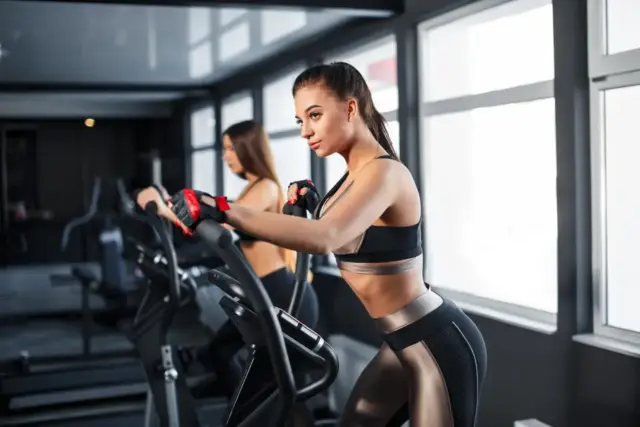Introduction
The world of fitness has seen a significant shift toward home workouts, especially in recent years. Whether it’s due to the convenience, the cost savings, or the desire to avoid crowded gyms, more and more people are discovering the joys of exercising in the comfort of their own space. But with this shift comes the question: What are the best workouts to do at home, regardless of fitness level?
In this article, we will explore 11 effective home workouts that cater to all fitness levels. These exercises require minimal equipment, if any, and can be easily modified to suit beginners, intermediates, and advanced fitness enthusiasts. So, let’s dive in and get moving!
For more in-depth information on the benefits of fitness, you can visit Health Weblog – Fitness.
Warm-Up: Preparing Your Body for Exercise
Importance of Warm-Ups
Before diving into any workout, it’s crucial to warm up your muscles and get your blood flowing. A proper warm-up helps prevent injuries and prepares your body for the more intense exercises to follow.
Simple Warm-Up Routine
Start with a few minutes of light cardio, such as jogging in place or jumping jacks. Follow this with dynamic stretches like arm circles, leg swings, and torso twists. Aim for about 5-10 minutes of warm-up to ensure your body is ready for action.
Overview of Effective Home Workouts
Finding the perfect workout routine can be challenging, especially with so many options available. Whether you’re a beginner or an experienced fitness enthusiast, it’s essential to have a well-rounded selection of exercises that target different muscle groups and fitness components. Below is a comprehensive overview table of 11 effective home workouts that cater to all fitness levels. This guide will help you understand the purpose and benefits of each exercise, making it easier to design your own workout routine.
| Workout | Target Area | Difficulty Level | Benefits | Notes |
|---|---|---|---|---|
| Bodyweight Squats | Lower Body | Beginner to Advanced | Strengthens quads, hamstrings, and glutes | Keep chest up, back straight |
| Push-Ups | Upper Body | Beginner to Advanced | Builds chest, shoulders, and triceps | Variations: knee push-ups, diamond |
| Plank | Core | All Levels | Enhances core stability and strength | Maintain straight body line |
| Tricep Dips | Upper Body | Intermediate | Tones triceps | Use a chair for support |
| Arm Circles | Shoulders | All Levels | Warms up shoulder muscles | Gradually increase circle size |
| Lunges | Lower Body | Beginner to Advanced | Tones legs and glutes | Variations: reverse, walking lunges |
| Glute Bridges | Lower Body | All Levels | Strengthens glutes and lower back | Squeeze glutes at the top |
| Bicycle Crunches | Core | Intermediate | Targets obliques | Controlled movements are key |
| Leg Raises | Lower Abs | Intermediate | Strengthens lower abdominal muscles | Avoid arching your back |
| Jumping Jacks | Cardio | All Levels | Boosts cardiovascular health | Maintain a steady rhythm |
| High Knees | Cardio | All Levels | Increases heart rate and burns calories | Lift knees to waist height |
This table provides a clear and concise overview of various home workouts, highlighting their target areas, difficulty levels, and benefits. Each exercise can be adjusted to match your current fitness level, ensuring that you can progress safely and effectively. By incorporating a mix of strength, cardio, and core exercises, you’ll achieve a balanced fitness regimen that promotes overall health and well-being. Whether you’re looking to build muscle, lose weight, or simply stay active, these workouts offer something for everyone. Start incorporating these exercises into your routine today and take the first step towards a healthier, fitter you!
Full-Body Workouts
1. Bodyweight Squats
Benefits and Technique:
Bodyweight squats are a fundamental exercise that targets the lower body, including the quads, hamstrings, and glutes. To perform a squat, stand with your feet shoulder-width apart, lower your body by bending your knees, and push your hips back as if you’re sitting in a chair. Keep your chest up and your back straight. Return to the starting position and repeat.
2. Push-Ups
Variations for Different Levels:
Push-ups are excellent for building upper body strength, especially in the chest, shoulders, and triceps. Beginners can start with knee push-ups, intermediates can do regular push-ups, and advanced exercisers can try elevated or one-arm push-ups. Keep your body in a straight line from head to heels, and lower your chest to the ground while keeping your elbows close to your body.
3. Plank
Core Strengthening Benefits:
The plank is a fantastic exercise for building core strength and stability. To do a plank, place your forearms on the ground with elbows directly under your shoulders, and extend your legs behind you, balancing on your toes. Keep your body in a straight line and hold the position for as long as possible.
Upper Body Workouts
4. Tricep Dips
How to Perform Safely:
Tricep dips target the triceps and can be done using a sturdy chair or bench. Sit on the edge of the chair, place your hands next to your hips, and slide your butt off the edge. Lower your body by bending your elbows, keeping them close to your body, and then push back up. Keep your feet flat on the ground for stability.
5. Arm Circles
Engaging the Shoulders:
Arm circles are a simple yet effective way to warm up and strengthen your shoulder muscles. Stand with your feet shoulder-width apart, extend your arms out to the sides, and make small circles with your arms. Gradually increase the size of the circles. Reverse the direction after a set period.
Lower Body Workouts
6. Lunges
Variations and Form Tips:
Lunges are great for targeting the legs and glutes. Start by standing tall, then step forward with one foot and lower your body until both knees are bent at a 90-degree angle. Push off the front foot to return to the starting position. Variations include reverse lunges and walking lunges. Ensure your front knee doesn’t go past your toes.
7. Glute Bridges
Strengthening the Posterior Chain:
Glute bridges are excellent for strengthening the glutes, hamstrings, and lower back. Lie on your back with your knees bent and feet flat on the floor. Lift your hips toward the ceiling, squeezing your glutes at the top, then slowly lower back down. Keep your core engaged throughout the movement.
Core Workouts
8. Bicycle Crunches
Targeting the Obliques:
Bicycle crunches are a dynamic core exercise that targets the obliques. Lie on your back, lift your legs off the ground, and alternate bringing your opposite elbow to your knee while extending the other leg. Keep your movements controlled and your core engaged.
9. Leg Raises
Focusing on Lower Abs:
Leg raises are perfect for targeting the lower abs. Lie flat on your back with your hands by your sides or under your hips for support. Keeping your legs straight, lift them towards the ceiling until they’re perpendicular to the floor, then slowly lower them back down. Avoid letting your lower back arch off the ground.
Cardio Workouts
10. Jumping Jacks
Cardiovascular Benefits:
Jumping jacks are a classic cardio exercise that gets your heart rate up. Start with your feet together and arms at your sides. Jump your feet out while raising your arms above your head, then return to the starting position. Keep a steady pace and maintain a good rhythm.
11. High Knees
Boosting Heart Rate:
High knees are another excellent cardio move. Stand tall and jog in place while lifting your knees as high as possible. Swing your arms in sync with your legs to maintain balance. This exercise not only improves cardiovascular fitness but also engages the core and legs.
Cool Down: Post-Workout Stretching
Importance of Cooling Down
Just as warming up is essential, cooling down helps your body transition back to a resting state. It reduces muscle soreness and aids in recovery.
Effective Cool-Down Stretches
Include stretches for all major muscle groups, holding each for 15-30 seconds. Focus on areas you’ve worked, such as the quads, hamstrings, chest, and shoulders. Deep breathing during stretches can help relax the body and mind.
Tips for Staying Motivated
Setting Realistic Goals
Setting achievable fitness goals helps keep you motivated. Start small and gradually increase the intensity and duration of your workouts.
Creating a Routine
Consistency is key to seeing progress. Establish a regular workout schedule that fits your lifestyle and stick to it.
Tracking Progress
Keep a journal or use a fitness app to track your workouts, note improvements, and celebrate milestones. Seeing your progress can be a great motivator.
Conclusion
Home workouts offer a versatile and accessible way to stay fit, regardless of your fitness level. By incorporating these 11 exercises into your routine, you can enjoy a full-body workout that improves strength, endurance, and overall health. Remember, the most important thing is to stay consistent and listen to your body. Happy exercising!
FAQs
1. Can beginners do these home workouts?
Yes, these workouts are designed to be adaptable for all fitness levels. Beginners can start with simpler variations and gradually progress.
2. Do I need any equipment for these exercises?
Most of these exercises require no equipment. However, items like a mat, chair, or resistance bands can enhance your workout.
3. How often should I do these workouts?
Aim for at least three to four times a week, depending on your fitness goals and schedule.
4. Can I combine these exercises with other forms of exercise?
Absolutely! These workouts can complement other activities like running, cycling, or yoga.
5. How can I increase the difficulty of these exercises?
You can increase difficulty by adding weights, increasing repetitions, or trying more advanced variations of the exercises.






More Stories
How can we acquire the benefits of Conolidine, and why is it important for our health?
Top Benefits of a Dexa Bone Scan for Your Bone Health
Mindful Meditation: Easily Boost Your Wellness and Mental Health